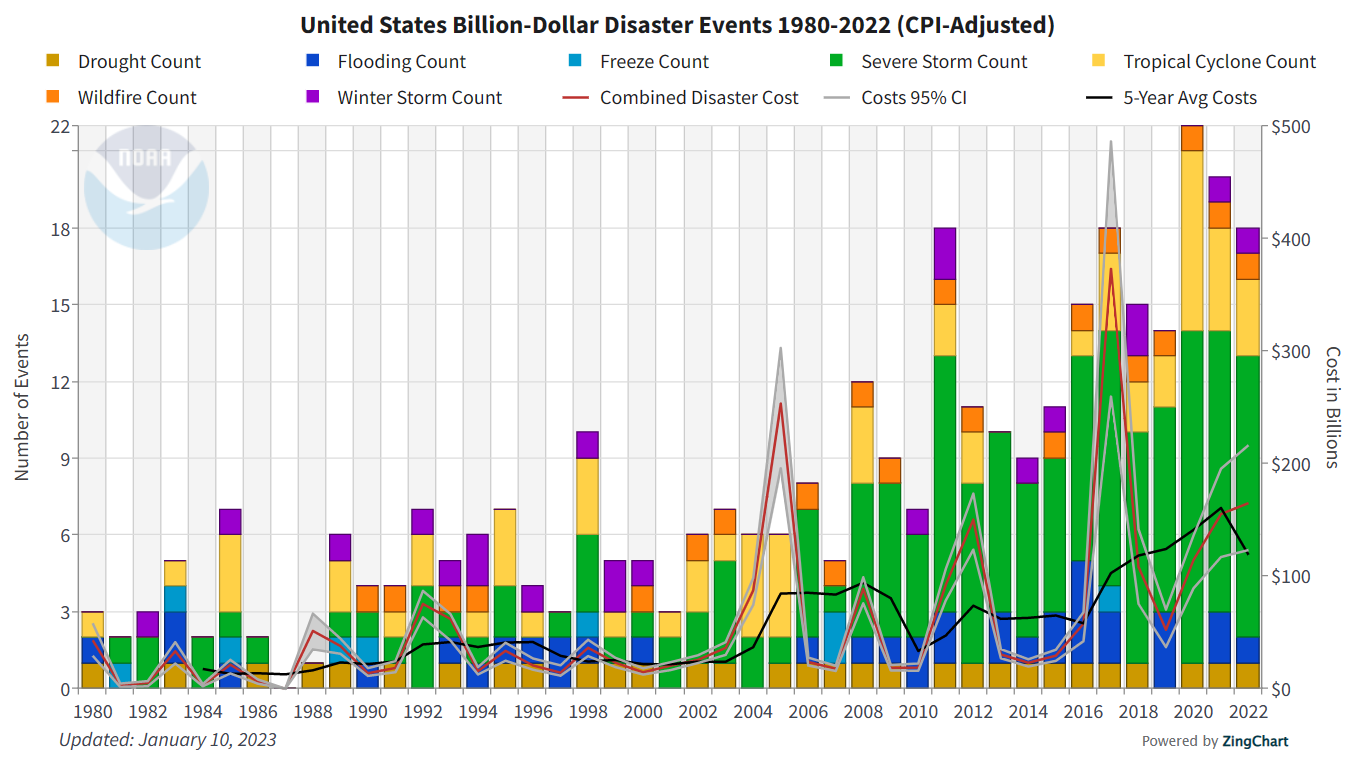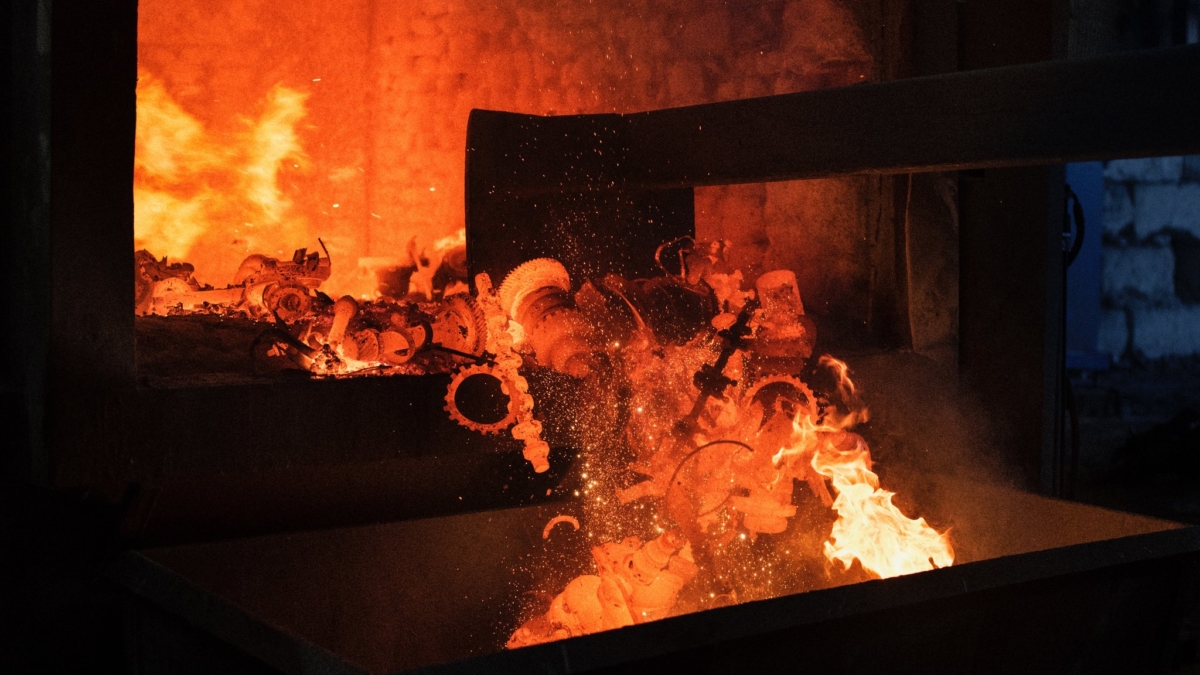Extreme weather left 474 people dead and cost $165 billion in the U.S. in 2022 – “It does not seem likely that these trends will reverse. Perhaps we need to be more prepared for a future that has rapidly become our present.”
By Oliver Milman
10 January 2023
(The Guardian) – The US endured a particularly painful year as communities wrestled with the growing impacts of the climate crisis, with 18 major disasters wreaking havoc across the country as planet-heating emissions continued to climb.
Storms, floods, wildfires and droughts caused a total of $165 billion in damages in the US last year, $10 billion more than the 2021 total and the third most costly year since records of major losses began in 1980, according to new US government data.
With 18 disasters costing at least $1 billion in damages, 2022 was only marginally behind 2020 and 2021 in terms of the number of severe events. A total of 474 people died last year from these major calamities, the annual report found.
Last year was “part of a trend of hyperactive disaster years across the US”, said Adam Smith, an applied climatologist at the National Oceanic and Atmospheric Administration (NOAA), which released the data. Since 2016, there have been 122 separate billion-dollar weather and climate events that have, in total, killed more than 5,000 people and caused more than $1 trillion in damages.
“We are seeing several trends of climate-enhanced disasters,” said Smith, noting that the US is seeing longer, more intense wildfire seasons, severe rainfall events and the sort of huge, category four and five hurricanes in the past few years that NOAA has not documented before in its historical record, which stretches back to 1851.
“It does not seem likely that these trends will reverse,” Smith said. “Perhaps we need to be more prepared for a future that has rapidly become our present.”
While the US has always previously experienced phenomena such as floods and wildfires, scientists have repeatedly found that global heating is supercharging these impacts by causing more intense bursts of rainfall from a warming, moisture-laden atmosphere while also drying out tinderbox-like vegetation in places such as California.
There is evidence that the climate crisis is also amplifying the strength of hurricanes that slam into the eastern states, such as Hurricane Ian, which became the deadliest storm to hit the US since Hurricane Katrina when it barreled into Florida in September. Ian was also the third costliest hurricane on record, according to NOAA, causing $112.9 billion in economic damages.
In recent decades, national and local authorities have made some advances in forecasting dangerous conditions, evacuating people and building more resilient infrastructure to withstand such impacts.
But the NOAA report sketches out a situation where the escalating disasters wrought by the climate crisis are outpacing the response – in the past six years there were just 18 days on average between billion-dollar disasters, compared with 82 days in the 1980s, hampering the country’s ability and resources to recover and prepare. [more]
Extreme weather left 474 people dead and cost $165bn in the US last year



